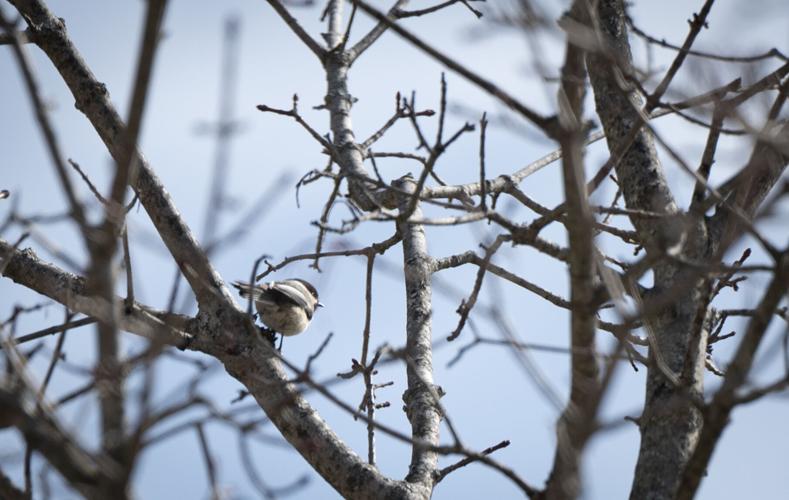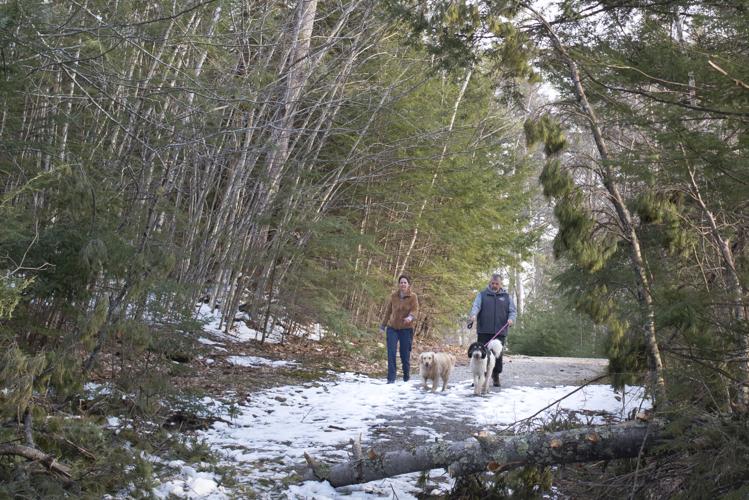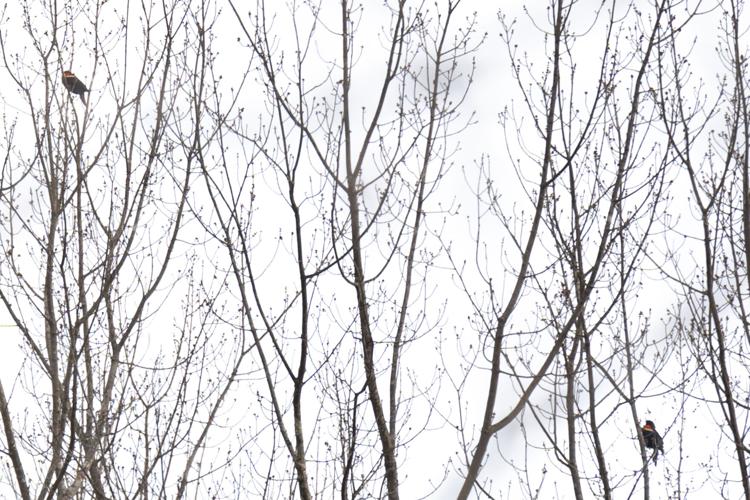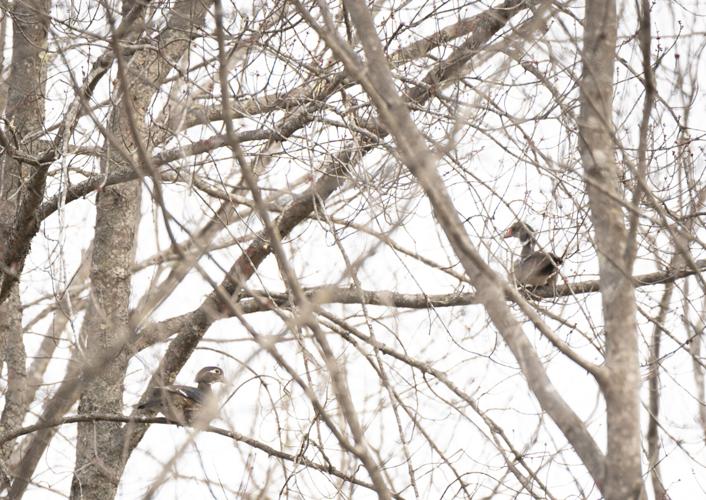With the arrival of spring comes the return of migratory birds. Of New Hampshire's birds, 85% migrate. Some fly only to the southern part of the state, while others travel as far as South America.
But the kinds of birds that can be seen in the Granite State are changing. The 2025 U.S. State of the Birds report, released by the U.S. Committee of the North American Bird Conservation Initiative in March, showed evidence of continued bird population decline. Continued warming of the climate has also affected migration routes, and habitat loss continues to threaten bird populations.
NH Audubon’s Senior Biologist Pamela Hunt puts out a New Hampshire State of the Birds report. The first statewide overview of bird populations and conservation was published in 2011, and an updated report was published in 2020.
“Roughly half of our species are declining, sometimes significantly,” she said. “What we do here at Audubon, obviously, is to focus on some of those. We can't look at all of them, but we keep track of most of them.”
The purple martin was abundant in the Lakes Region with a handful of colonies until the early 2000s. The last colony in the region was abandoned in 2017 due to population decline.
Wendy Oellers-Fulmer, 71, of Gilford, is an avid birdwatcher, and writes a weekly "Nature Corner" for the Gilford Public Library. She has been birdwatching for 40 years, taking it more seriously in the past 15 years after retiring from teaching. She confirmed the disappearance of the purple martin through her own experience.
“I haven't seen a purple martin in years and years and years, and they used to be really prevalent in the Lakes Region,” she said.
The decline is not well understood, but speculation includes threats on the South American winter range, unpredictable spring weather, or changes in prey availability, like insects. The bird can still be found in the Granite State though, with over 50 nests found on the Seacoast. There have been conservation efforts in New Hampshire to protect the purple martin, focused from April to August when the bird arrives instate. Purple martins nest in manmade sites, but other birds rely on natural habitats. And statewide conservation efforts can only go so far.
“We can't just conserve land here in New Hampshire and expect species that spend the winter in Panama to do fine if they're in trouble there,” Hunt said.
The bobolink is another species of concern in New Hampshire, experiencing strong population decreases. The bird is often seen here between May and October for breeding season, but migrates on a 12,500-mile journey to South America in the winter. The main threat to the bobolink is habitat loss and fragmentation. Bobolinks nest in fields and grasslands, and mowing has contributed to its habitat loss. Oellers-Fulmer had bobolinks in a field near her home last year, but that field was mowed over.
“There was a field there where I was watching a pair of nesting bobolinks. And I came by two days later, and the field had been mowed,” she said. “There was no reason for it to be mowed because they weren't building or anything right away there.”
Hunt said to continue protecting bird populations, conservationists must be proactive, not reactive. No Mow May is a nationwide conservation effort to conserve field and grassland habitats. Eagles have had a successful population increase for decades since the banning of dichlorodiphenyltrichloroethane, or DDT, and the American public’s interest in saving their national bird. Active research and understanding of each species' threats and needs is important to conservation.
“A lot of these declining populations, we were just kind of barking up the same tree regularly: ‘We need to protect habitat,’” Hunt said. “Well, if it's not habitat, if it's insects or something else, we need to take the next step and be a little more proactive and figure out what the threats really are, and addressing those directly.”
Hunt suggested people should pay attention to bird populations, as they can be indicators of an environmental problem which affect everyone’s quality of life.
“There's always another human, homocentric rationale for keeping track of what's going on in the natural world,” Hunt said. “Because they could be the proverbial canaries in a coal mine.”
A local effort by the Meredith Conservation Committee seeks to acquire 40 acres of wetland on Lake Winnipesaukee near Page Pond, home to waterfowl and other water birds.
The conservation of wetlands is a national trend, and there has been an 18% increase in waterbird populations since 1970. The great blue heron and the osprey are birds with increasing populations, while the blue-winged teal is still on the decline.
The Meredith wetland conservation is funded by grants, including the U.S. Forest Service’s Community Forest Program and accompanying matching funds, and the NH Moose Plate Program. The Forest Service grant requires a trail to be built in the space. Meredith Conservation Committee Chair Scott Powell said the trail will allow people to engage with animals and learn about their habitat.
“They get to appreciate how much wildlife is on these properties,” he said. “That increases the public's awareness of conservation and the value of green space, and will help us to conserve more land in the future.”
Powell also said the American woodcock, whose population is in decline, can be found at Page Pond. Males have a unique mating dance, sitting on the ground and making a “peent” sound, then taking off to fly in a circular pattern, as high as 300 feet. It then free-falls, crashing down to Earth, then repeats the choreography two or three times.
“If you want to see a neat birdwatching event, the fields at Page Pond, they have a woodcock, and that's where I saw them,” Powell said.
With migration in full swing, the arrival of some birds indicates spring has arrived. It used to be the American robin to usher in the season, but since the 2000s, robins have been found in the Granite State year-round due to an increase in local food supply. Now, the calls of the red-winged blackbird, the gray catbird, and the sight of turkey vultures are signs of the season change.
It is also becoming more common in the past five years to see red-bellied woodpeckers, as the climate warms and pushes the species further north.
The warming climate also means a potential loss of the common loon, a symbol of New Hampshire. Loons migrate to the lakes during the spring and leave in the fall for the coasts. But warmer temperatures make it harder to nest, leading to lower production rates. And while conservation efforts in the state have increased populations, the loon is still threatened. Powell believes if people aren’t careful, in the next 50 years, the Lakes Region may lose their iconic bird.
“It’ll be around for my lifetime. I'm old enough that they'll still be here,” he said. “But my kids and grandkids probably won't see them.”






















(0) comments
Welcome to the discussion.
Log In
Keep it Clean. Please avoid obscene, vulgar, lewd, racist or sexually-oriented language.
PLEASE TURN OFF YOUR CAPS LOCK.
Don't Threaten. Threats of harming another person will not be tolerated.
Be Truthful. Don't knowingly lie about anyone or anything.
Be Nice. No racism, sexism or any sort of -ism that is degrading to another person.
Be Proactive. Use the 'Report' link on each comment to let us know of abusive posts.
Share with Us. We'd love to hear eyewitness accounts, the history behind an article.